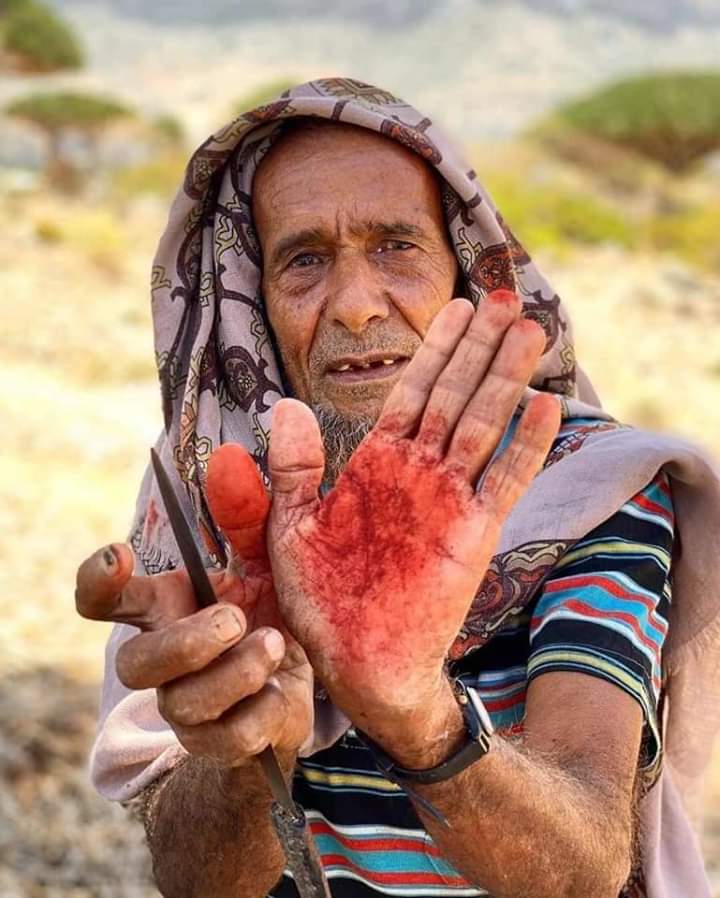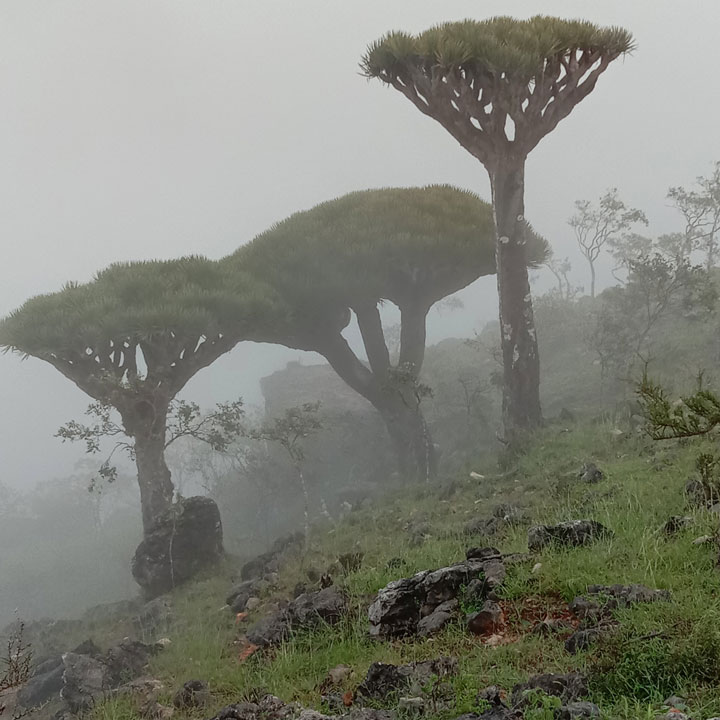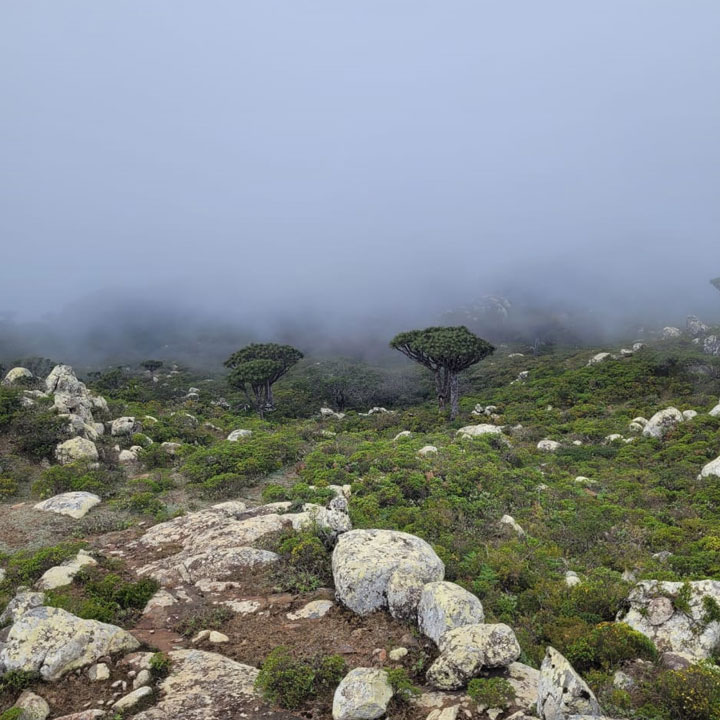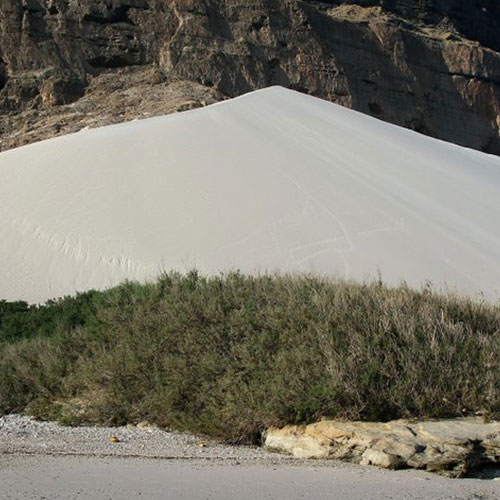About Socotra Island






Socotra is an island in the Indian Ocean about 210 miles (340 km) southeast of Yemen, to which it belongs. The largest of several islands extending eastward from the Horn of Africa, it has an area of about 1,400 square miles (3,600 square km). The Hajīr (Hajhir) Mountains occupy Socotra’s interior, whereas narrow coastal plains lie in the north and a broader plain in the south. To the southwest and west are the smaller islands of Samḥah and Darzah, called al-Ikhwān (“the Brothers”), and ʿAbd al-Kūrī, all of which also belong to the island. The islands stand on coral banks and may once have been connected with the African and Arabian mainlands. Socotra’s flora includes several famous species, among them myrrh, frankincense, and the dragon’s blood tree. In recognition of its distinct plant and animal life, the archipelago was designated a UNESCO World Heritage site in 2008.
Socotra’s name is traced to the Sanskrit dvipa-sakhadara, “island abode of bliss.” The island is mentioned in various legends. Socotra was long ruled by the Mahra sultans of southeastern Yemen. Their rule on Socotra was interrupted by Portuguese occupation between 1507 and 1511. In 1834 the British tried and failed to purchase the island; in the 1880s, however, the sultan accepted British protection for the entire sultanate. The sultanate came to an end in 1967, when Socotra became part of independent South Yemen, and later, unified Yemen.
Socotra has three main habitats: coastal plains, an extensive limestone Socotra has three main habitats: coastal plains, an extensive limestone plateau, and the craggy peaks of Haggeher mountain, rising to 1630 meters.Scientists first reached the remote island in 1880, when Scottish botanist Isaac Bailey Balfour collected around 500 plants, of which over 200 were new to Science.
To date, approximately 900 vascular plants have been recorded, of which more than 300 are endemic which makes Socotra the world’s tenth richest island group for endemic plant species.
Socotra Island’s flora is a testament to the remarkable adaptability and resilience of plant life in extreme environments. Its unique species and ecosystems make it a globally significant hotspot for biodiversity conservation and a destination of interest for scientists, botanists, and nature enthusiasts alike.
The reptilian a is also very rich with 23 out of 26 species regarded as endemics. New species of insect are still being recorded 50% of the 600 insect species are endemic. The island has a population of approximately 100,000 people, who speak their unique Socotri language. Apart from the main town of Hadibo, there is little infrastructure on the island, and visitors will spend most of their time camping in the highlands or on barren beaches. Socotra is an amazing site for camping, exploring, trekking, and immersing oneself in a natural worldunlike any other. So many wonders of Socotra island.
Climate and weather
The most significant factors of the climate on Socotra are the monsoons. The summer, southwest monsoon brings hot, dry, and very strong winds from Africa from June to September. The winter or northeast monsoon blows from November to January and brings most of the rain.
The summer monsoon period of high wind brings severe conditions which can be very unpleasant. The high winds are very strong, dry, and constant.
This has a major impact on the people, animals, and plants of the island. Although most of the island is quite dry at this time of year, in the higher mountains there can be cold, cool weather and sometimes even rain.
Rainfall is crucial to all aspects of the Socotra. It varies with season and elevation as well as in different parts of the island. the northern coasts can receive between 100 and 200 mm per year, but sometimes much less; in some years there is no rain at all. The highest mountain areas can be covered in mist or cloud for long periods of the year, and dew can be heavy in higher areas
through the summer, providing moisture for plants growing there.





Best Time to Visit Socotra
Socotra’s weather is mostly consistent throughout the year, however there is
significant seasonal variation. The “tourist season” begins at the end of
September, when the monsoon season finishes.
October to December
This is the best tourist season and ideal for naturelovers. At this time of year, the island takes on a fresh green coat after the monsoon, and the climate is normally warm, with the possibility of an occasional shower.
January February
is when all of the trees of the island get their leaves
back. It is the best time for walking and hiking.
March to May
are the most beautiful months. The Dragon Blood and Bottle Trees are in bloom and the sea calms down. It is the greatest time of the year for swimming, snorkeling, and scuba diving around Socotra island, as well
as relaxing on the white sandy beaches.
June, July, and August
are the monsoon season. Strong, scorching winds blast dirt and dust into the air, causing extremely turbulent seasin the north of the island, while in the central regions and the southern coast, there are no
strong winds.
September
usually offers days that are warm and windless.
Attractive Places on the island

Dixsam
Diksam Plateau and gorge is definitely the most spectacular limestone landscape feature on the island. The gorge drops 700 m (2295 ft) vertically to the valley floor. In Diksam can seethe attractive stands of Dragon’s Blood Trees and the extensive limestone pavement. Sections of the plateau have partially slipped into the gorge, leaving ‘lost worlds’ accessible only to buzzards and vultures. The plateau is home to nomadic Bedouin herdsmen who move from one site to another with their herds. The forest in Diksom is the last Dragon’s Blood woodland. Nowhere else in the world can one find Dragon’s Blood Trees in such densities as growing here. Local people will show us how they used to collect – and still collect on a smaller scale -the precious red resin of the trees.

Dihamari Marine Protected Area
It boasts with one of the richest coral reefs on the archipelago. You can relax on the beach in palm leaf huts and swim and snorkel in Dihamri PA. Snorkeling gear can be hired there. Marine species you will see underwater include: Parrotfish, Moray eel, Rays, Sea urchins, if you are lucky you will meet turtles. Divers can also use the services of Dihamri Diving center and go for a dive in Dihamri or another of superb diving spots of Socotra.

Qalansiyha Town
Qalansiyha: is the second administrative town on Socotra island, about an hour and a half from Hadibo, with a paved road the entire way. Qalansia town is a quaint and scenic fishing village with traditional buildings and small alleys. It contains a few shops, but it is primarily a residential seaside community with access to the sea and inhabitants spending their days fishing and grazing livestock. Many fishing boats can be seen just north of the village, past enormous sand dunes and cliffs, and from there, you can take a boat to Shuab Beach.

Aomek , Dougab Cave, Zhaik Dunes
Aomek is located on the south coast of Socotra and is a magnificent beach on the Indian Ocean with many sand dunes and palm trees. The sand is white and feels like powder, making it a pleasure to swim and walk on. There is also a little Dougab cave with numerous things to see and a beautiful perspective of the Indian Ocean. You can visit the lovely Zhaik dunes in the south.

Hoq Cave Hoq
Cave Hoq Cave is located in the southern mountains of Socotra Island. It is three kilometres long. Hoq Cave is considered to be the biggest Cave on Socotra Island. Hoq Cave is unique because of the spectacular views inside the cave. The entrance is a path through to the end of the cave. It is a long tunnel, as you can notice while in the cave. to arrive need to hike up 1.5 hours until reach the entrance of the cave and on hour inside the the cave . the cave is more than three km long with water pool at the endFull of speleothems are inside the cave, inside you will see beautiful stalagmites , stalactite and Ancient writing on the walls such as a picture of an old trading ship

Arher freshwater creek and beach
Arher one of the attractive place, where sand dunes standing 150 m (492 ft) high have been piled up against the sheer rock faces by the prevailing westerly winds. In Arher there is a fresh creak coming out from a granite massive is meeting salty sea water on the beach. You can relax on green grass around the creak, swim in the sea or if you feel fit you can climb a huge sand dune to get a fantastic view over this charming spot

Fermahin Forest
The largest and most extensive population of Dragon’s Blood Trees of Socotra is shaping the landscape character of Rokeb di Fermahin in the east of the plateau. The spot covers an area of 540 ha exposed to the southwestern monsoon and rains. The population suffers from regeneration and is therefore considered an endangered species. In a lot of different species of endemic plants Frankincense trees, Socotran Myrrh trees… and habitats of a lot of birds.

Detwah Beach and Lagoon
This is one of Socotra’s protected nature sanctuaries and the lagoon was declared a Ramsar site in 2000. The site is a costal lagoon on the north-western side of the island…consisting of a tidal inlet open to the sea , it is surrounded by sand dunes and 400m-high limestone and granite cliffs

Wadi Ayhaft
Wadi Ayhaft is a must-visit destination for anyone exploring Socotra. Whether you’re drawn to its natural beauty, cultural significance, or outdoor activities, the valley offers a truly unforgettable experience in one of the world’s most unique and remote destinations.
